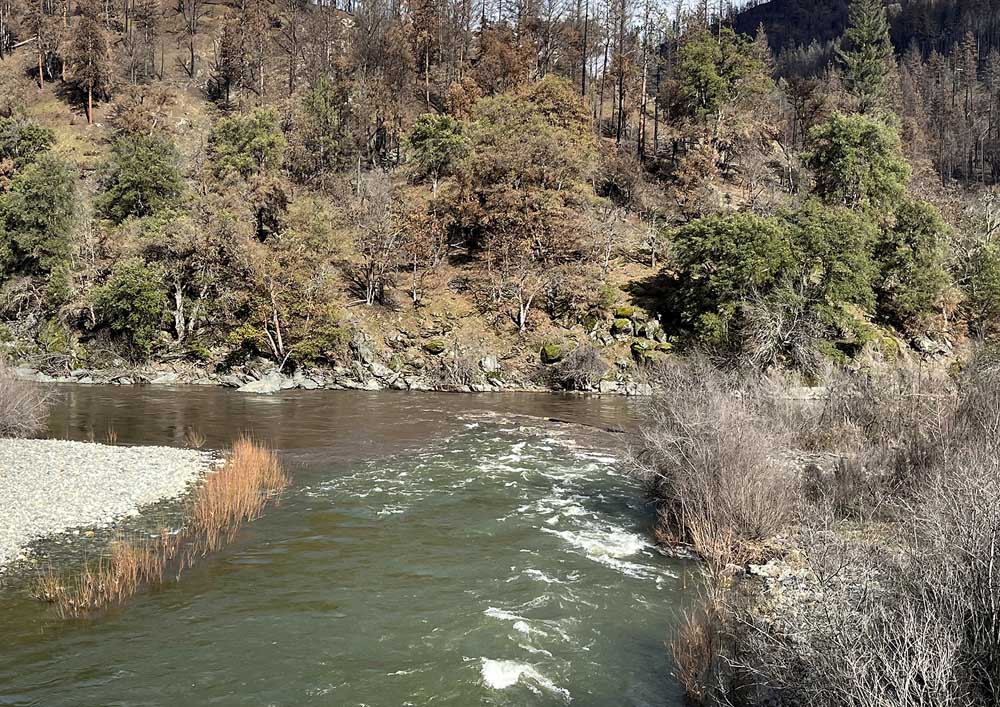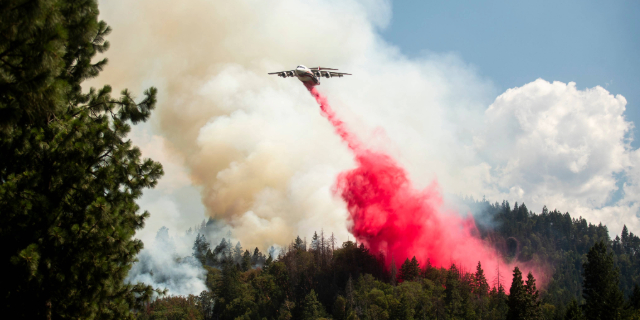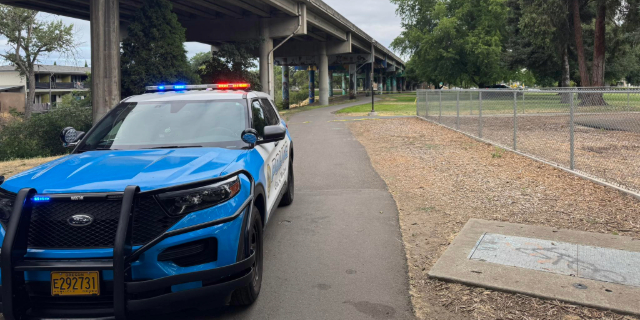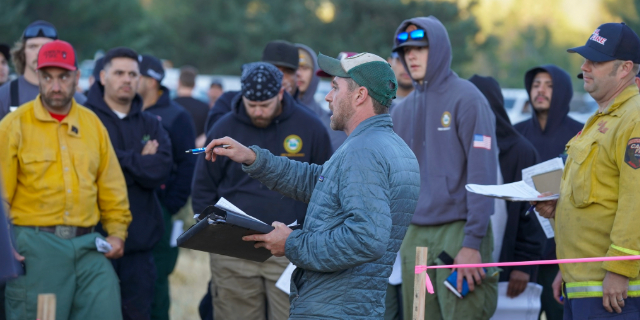Citizen concerns prompt on-site meeting to hear about Klamath River dam removals
Published 12:45 pm Friday, February 9, 2024

- The emerald green Scott River, bottom, connects with the muddied Klamath River west of the Iron Gate Dam removal off Highway 96 near Horse Creek, California, on Thursday.
As muddy water flows down the Klamath River after the recent breaching of three dams, the Siskiyou County, California, Board of Supervisors has scheduled a special meeting on Tuesday at what is now the former site of Copco Lake.
Trending
The supervisors say they want to hear from concerned constituents and provide “accurate and vital” information to them.
With the breaching last month of Iron Gate and Copco 1 dams in California about 25 miles southeast of Ashland and the breaching of JC Boyle Dam near Klamath Falls, sediment in reservoirs behind the dams has flowed downstream and muddied the river. It has killed fish, while muck left behind where reservoirs once stood has caused the death of at least 10 deer stuck in the muck.
Those scenes have prompted a flood of comments, including those made via social media sites and one made from the halls of Congress.
Trending
“The destruction of the Klamath dams is a classic case of misdiagnosing the problem and applying the wrong remedy,” U.S. Rep. Cliff Bentz, R-Oregon, said in recorded comments made from the House floor.
The dams are being removed in an effort to improve fish populations and river health.
The county has issued a press release stating that its meeting has been scheduled in response to “the public’s expressed concerns” regarding the dam removal project, and that it “will provide a platform for the public to voice their opinions, ask questions, contribute to the dialogue surrounding the project, and access accurate and vital information.”
As of Thursday afternoon, no agenda for the meeting or list of any presenters was published to the county website, which contains pages specifically dedicated to the project. The meeting is set for 10 a.m. at the Copco Lake Community Center, 27739 Copco Road, Montague.
The Klamath River Renewal Corporation is the private company removing the hydroelectric dams, after their former owner, PacifiCorp, surrendered them rather than construct passages for migrating fish. The project’s estimated $450-million cost is funded through a $200-million surcharge on PacifiCorp and $250 million in bonds from the state of California. A fourth dam, Copco 2, was removed last year.
The corporation has issued a half-dozen written statements about river conditions, wildlife losses and related issues since the last of the dams to be breached, Copco 1, was breached Jan. 23.
“As time goes on and the area dries out, this risk to wildlife in the reservoir will decrease,” the company said on Jan. 29.
The silt in the river was expected, the company said on Jan. 31, adding that “rivers heal quickly.”
The river will remain cloudier than usual for up to two years after deconstruction is completed later this year, with fish populations recovering from sediment impacts within five years, according to the company.
“This short-term impact will be small, relative to the long-term improvements to water quality and fisheries habitat,” it said.
The company has reported the death of “significant numbers” of non-native fish that aren’t adapted to a river environment. It said the large amount of sediment in the river can lead to extremely low levels of dissolved oxygen that can kill fish.
January was chosen as the time of year to breach the dams because most migrating adult salmon have left the mainstem Klamath River to spawn in tributaries, and juvenile salmon have not yet started their migration out to the sea from tributary waterways.
“As the reservoirs transform back into a river and stir up sediments, conditions have become intolerable for the perch, bass, and catfish that thrived in the warm, still water conditions,” the company said, adding that trout might die, too. “While it is unpleasant to see the die-off of these fish, the drawdown period poses long-term benefits to the Klamath River, including avoiding the mass introduction of non-native species to the mainstem.”
Most sediment is expected to wash out to the ocean. Meanwhile, restoration efforts have begun, with crews already reseeding and replanting areas closest to the former shorelines. All 2,200 formerly submerged acres will be revegetated using seeds from 98 varieties of plants. The Yurok Tribe is under contract to aid in the restoration efforts.
Iron Gate and the Copco dams are about 20 to 25 miles southeast of Ashland, while JC Boyle is about 15 miles southwest of Klamath Falls in Oregon. Copco 1, built in 1918, is the oldest, while Iron Gate, built in 1962, is the youngest.
In his comments, made before a mostly empty House chamber and posted this week to his office’s social media site, Bentz said the problem with diminishing salmon populations is ocean conditions, not fish-blocking dams.
“There may be someday a modest benefit to these fish after the dams have been removed and when millions upon millions of tax dollars are spent on habitat recovery, but these misplaced efforts will not bring fish runs back,” he said. “Whatever the modest improvement might be, it will not be worth the loss of the clean electrical power that has been created by these dams and certainly the few additional fish that return will not justify the increased flows of water taken from the farmers.”
For more information, go to the Siskiyou County dam project site at bit.ly/498KcCu, the Klamath Basin Monitoring Program site at kbmp.net or the Klamath River Renewal Corporation site at klamathrenewal.org.









